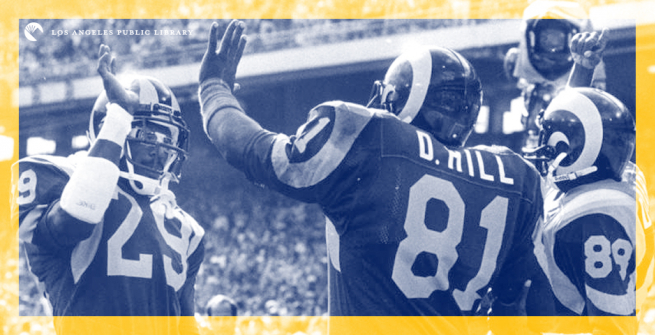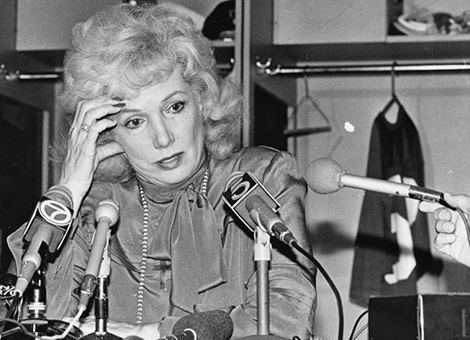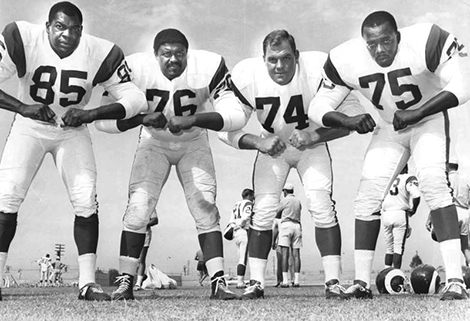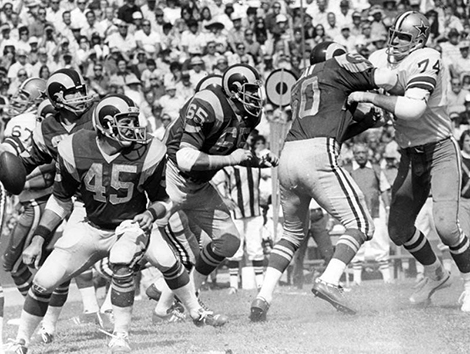There will be a small sporting event played in Atlanta on Sunday, February 3, matching the New England Patriots and the Los Angeles Rams. You may have heard of it. It’s OK, you can tell people you’re just watching it to see the commercials, or a friend was having a party and it happened to be on. Or maybe you are addicted to sporting events that are counted using Roman numerals.
The Rams, in their second tour in Los Angeles, have made it to the Super Bowl in just three seasons after leaving St. Louis. They also used to play in Cleveland, but that’s another story. But the Los Angeles Rams, in their first tour in Los Angeles, had made it to the Super Bowl once before, a mere 39, or since this is a Super Bowl, XXXIX, years ago. Or, seven years before the Rams’ current coach, Sean McVay, was born.
Super Bowl XIV saw the Rams play one of the NFL’s most dominant teams ever, the Pittsburgh Steelers, on January 20, 1980, at the Rose Bowl. The presence of this particular Rams team in the Super Bowl was a strange feeling for local fans.
Prior to the start of the 1979 season, Rams owner Carroll Rosenbloom had drowned while swimming in the ocean in Florida. A heart attack was the official cause, but rumors about what the actual cause of death was have persisted. Regardless of the cause of Rosenbloom’s death, his widow, Georgia (Frontiere), inherited control of the team. This would lead to some intrafamily battles for control of the team, and ultimately, the team’s move to St. Louis in 1995.
The Rams were coached by Ray Malavasi, a longtime assistant who was well-respected by the players. Malavasi had taken over the team during training camp in 1978 when coach George Allen, who had coached the team in the late 1960s, was fired before the season started after a series of conflicts between Allen and Rams players.
In the previous six seasons, the Rams had been eliminated in the playoffs by either the Dallas Cowboys or the Minnesota Vikings. Twice the Rams lost conference championships to the Vikings in subfreezing weather. Two other times, Dallas traveled to Los Angeles and routed the Rams in the conference championship. In 1977, Minnesota had to play at the Coliseum, but torrential rains turned the field into a mud pit and the Rams lost 14-7. The NFL playoffs had turned into an unending series of disappointments for football fans in Los Angeles.
The Rams had a mediocre regular season, finishing 9-7, but that was good enough for their seventh straight NFC West championship. The team was hit with injuries and had to turn to backup quarterback Vince Ferragamo for the playoffs. Ferragamo did not inspire much confidence, throwing 10 interceptions and only 5 touchdown passes. When the Rams lost their final regular season game, at home to New Orleans, the L.A. Times headline read “Arrivederci Aroma: Rams Smell Up Coliseum, 29-14”
The playoffs in 1979 turned out differently for the Rams. They upset the Cowboys in Dallas 21-19, and then played Tampa Bay for the NFC championship and won a very dreary 9-0 game. Rams fans who had been long awaiting a chance at the Super Bowl did not care much for style points.
Despite playing close to home in Pasadena, the Rams were still considered big underdogs against the Steelers. The Steelers had won three of the last five Super Bowls using a dynamic offense, featuring quarterback Terry Bradshaw and running back Franco Harris, and a smothering defense, nicknamed the Steel Curtain.
The Rams were best known for using a defensive lineman, Jack Youngblood, who was playing on a broken leg. Well, it was broken so much that he couldn’t run around on it. The Rams offense usually featured a lot of running behind one of the league’s best offensive line. For many years Lawrence McCutcheon had been the Rams star running back, but Wendell Tyler was starting to take over the job. Any resemblance between the Rams of 1979-80 and this year’s team stop at the color of the jerseys.
Playing on a relatively chilly Pasadena afternoon (54 degrees at kickoff), the Rams turned out to be surprisingly tough opponents for the Steelers. At halftime, the Rams led 13-10. Los Angeles fans began to dream of an upset in the Super Bowl that would have rivaled the New York Jets upset of the Baltimore Colts in Super Bowl III.
For halftime entertainment, the NFL used (checks thesaurus for a word to describe this, throws thesaurus away in dismay) Up With People. All I can say is that if you saw Up With People, you would know what it was. But if you didn’t see it happen firsthand, you would not understand what it was. Officially, the halftime show was a tribute to the Big Band Era. Was there some nostalgia boom for Big Band Music in 1980? No. The answer was no. Nevertheless, Up With People persisted with the show.
There weren’t many options to escape Up With People in 1980. There was no counterprogramming of the Puppy Bowl. You couldn’t text people. The only escape was to go to the bathroom or have a discussion with someone sitting next to you. It was horrible. Also, in 1980, the Super Bowl didn’t feature any special commercials. That didn’t happen until 1984. You just had to suck it up.
A good thought experiment would be: will we write the same things about this year’s halftime show, Maroon 5, 39 years later?
Fortunately, the game restarted for the second half. And the Steelers wasted little time in retaking the lead, scoring five plays into the third quarter on a 47-yard touchdown pass from Bradshaw to Lynn Swann.
It took the Rams just four plays to retake the lead. McCutcheon threw a 24-yard touchdown pass to Ron Smith on an option play and the Rams were back on top 19-17. The Rams held on to the lead as the fourth quarter began after Bradshaw ended two Pittsburgh drives with interceptions.
The Steelers got the ball for the first time in the fourth quarter at the Rams 25 with 12:59 left in the game. Two plays gained two yards. Then, on 3rd and 8, Bradshaw connected with John Stallworth for a 73-yard touchdown pass. The Steelers took a 24-19 lead. Pittsburgh would tack one more score for a 31-19 win. Bradshaw would be named the game’s MVP.
The next year, the Rams started playing home games in Anaheim instead of the Coliseum. And in 1995, the Rams moved to St. Louis. On January 30, 2000, the St. Louis Rams won Super Bowl XXXIV 23-16 over the Tennessee Titans. Two years later in Super Bowl XXXVI, the Rams were upset in the Super Bowl 20-17 by a New England Patriots team led by a young quarterback named Tom Brady.
Other L.A. professional football championship games
- 1949: The Rams lost 14-0 to the Philadelphia Eagles in front of around 22,000 rain-soaked fans at the Coliseum
- 1950: The Cleveland Browns beat the Rams 30-28 in Cleveland
- 1951: The Rams beat the Browns 24-17 at the Coliseum
- 1955: Over 85,000 show up at the Coliseum to see the Browns rout the Rams 38-14
- 1961: The Los Angeles Chargers (who played the 1960 regular season in Los Angeles before moving to San Diego the next season until coming back in 2017) lost on New Year’s Day at Houston 24-16. The game should have been played at the Coliseum, but the newly formed AFL feared that the small crowds that the Chargers drew (about 10,000 per game) would look bad on TV and moved the game to Houston
- 1984: The Los Angeles Raiders, playing their 2nd of 13 seasons, wins Super Bowl XVIII over Washington 38-9



